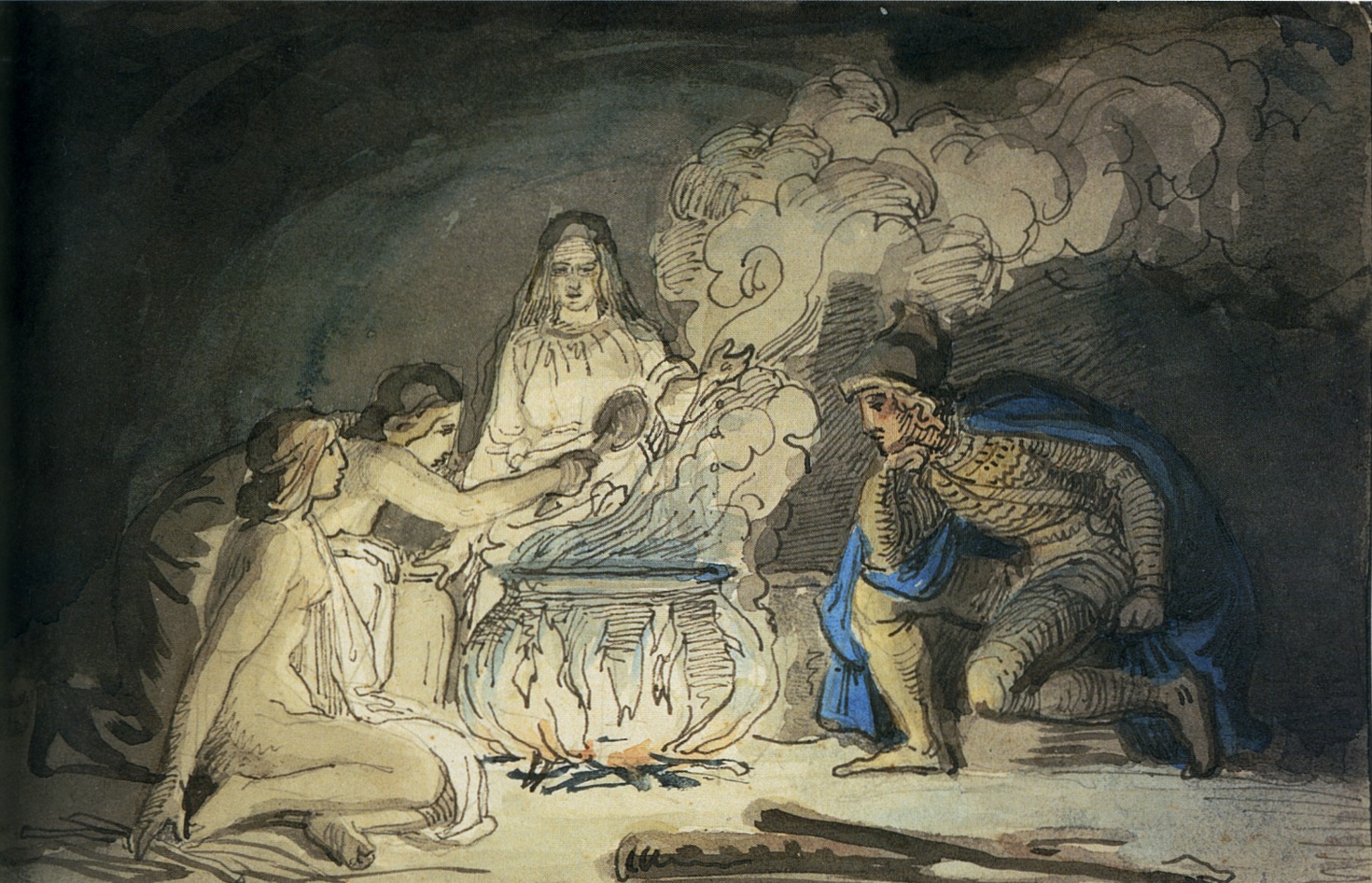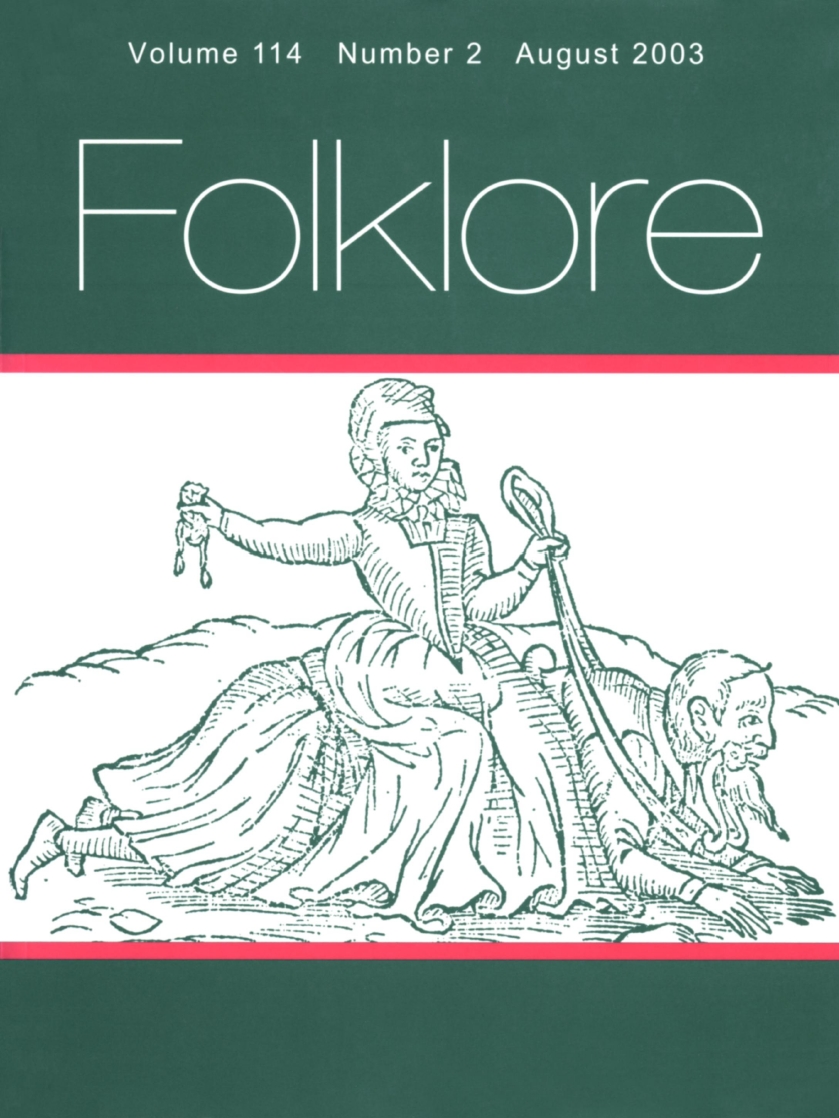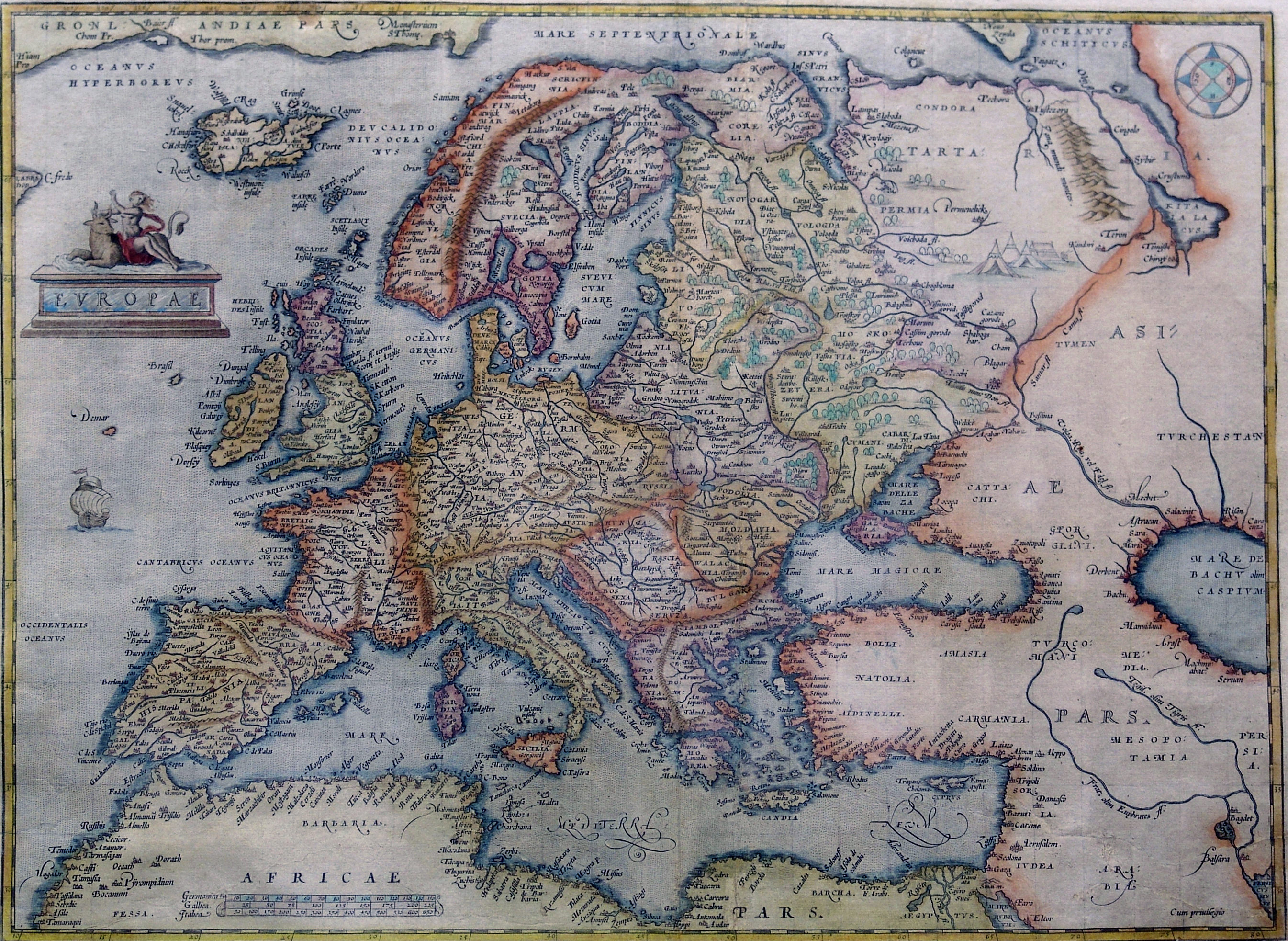|
Brothers Grimm
The Brothers Grimm ( or ), Jacob (1785–1863) and Wilhelm (1786–1859), were a brother duo of German academics, philologists, cultural researchers, lexicographers, and authors who together collected and published folklore. They are among the best-known storytellers of folk tales, popularizing stories such as "Cinderella" ("), " The Frog Prince" (""), " Hansel and Gretel" ("), " Little Red Riding Hood" (""), " Rapunzel", " Rumpelstiltskin" (""), " Sleeping Beauty" (""), and "Snow White" (""). Their first collection of folk tales, '' Children's and Household Tales'' (), began publication in 1812. The Brothers Grimm spent their formative years in the town of Hanau in the Landgraviate of Hesse-Kassel. Their father's death in 1796 (when Jacob was eleven and Wilhelm was ten) caused great poverty for the family and affected the brothers many years after. Both brothers attended the University of Marburg, where they developed a curiosity about German folklore, which grew into a l ... [...More Info...] [...Related Items...] OR: [Wikipedia] [Google] [Baidu] |
Grimm
Grimm may refer to: People * Grimm (surname) * Brothers Grimm, German linguists ** Jacob Grimm (1785–1863), German philologist, jurist and mythologist ** Wilhelm Grimm (1786–1859), German author, the younger of the Brothers Grimm * Christian Grimm, German footballer * Marco Grimm, German footballer Places * Grimm (Hamburg), Germany * Grimmenturm, Zürich (Switzerland) Film and television * ''Grimm'' (TV series), a 2011 American series * ''Grimm'' (film), a 2003 Dutch film * ''The Brothers Grimm'' (film), a 2005 film starring Matt Damon and Heath Ledger Other arts and entertainment * ''Grimm'' (musical), a 2014 musical by Peter Lund and Thomas Zaufke * ''Grimm'' (role-playing game), a role-playing game, released by Fantasy Flight Games * Grimms, an English band Fictional characters * Grimm, an '' Advance Wars: Dual Strike'' character * Grimm, a '' Mirror Mirror'' character * Grimm, a '' Mother Goose and Grimm'' character * Grimm the Dragon, a '' Princess Gwenevere a ... [...More Info...] [...Related Items...] OR: [Wikipedia] [Google] [Baidu] |
Landgraviate Of Hesse-Kassel
The Landgraviate of Hesse-Kassel (german: Landgrafschaft Hessen-Kassel), spelled Hesse-Cassel during its entire existence, was a state in the Holy Roman Empire that was directly subject to the Emperor. The state was created in 1567 when the Landgraviate of Hesse was divided upon the death of Philip I, Landgrave of Hesse. His eldest son William IV inherited the northern half of the Landgraviate and the capital of Kassel. The other sons received the Landgraviate of Hesse-Marburg, the Landgraviate of Hesse-Rheinfels and the Landgraviate of Hesse-Darmstadt. During the Napoleonic reorganisation of the Empire in 1803, the Landgrave of Hesse-Kassel was elevated to an Electorate and Landgrave William IX became an Imperial Elector. Many members of the Hesse-Kassel House served in the Danish military gaining high ranks and power in the Oldenburg realm due to the fact that many Landgraves were married to Danish princesses. Members of the family who are known to have served Denmark- ... [...More Info...] [...Related Items...] OR: [Wikipedia] [Google] [Baidu] |
Propaganda In Nazi Germany
The propaganda used by the German Nazi Party in the years leading up to and during Adolf Hitler's dictatorship of Nazi Germany, Germany from 1933 to 1945 was a crucial instrument for acquiring and maintaining power, and for the implementation of Nazism, Nazi policies. Themes Nazi propaganda promoted Nazi ideology by demonizing the enemies of the Nazi Party, notably Jews and Communism, communists, but also Capitalism, capitalists and intellectuals. It promoted the values asserted by the Nazis, including heroic death, ''Führerprinzip'' (leader principle), ''Volksgemeinschaft'' (people's community), ''Blood and Soil, Blut und Boden'' (blood and soil) and pride in the Germanic ''Herrenvolk'' (master race). Propaganda was also used to maintain the cult of personality around Nazi leader Adolf Hitler, and to promote campaigns for Nazi eugenics, eugenics and the Heim ins Reich, annexation of German-speaking areas. After the outbreak of World War II, Nazi propaganda vilified Germany's ... [...More Info...] [...Related Items...] OR: [Wikipedia] [Google] [Baidu] |
Snow White And The Seven Dwarfs (1937 Film)
''Snow White and the Seven Dwarfs'' is a 1937 American animated musical fantasy film produced by Walt Disney Productions and released by RKO Radio Pictures. Based on the 1812 German fairy tale by the Brothers Grimm, it is the first full-length traditionally animated feature film and the first Disney animated feature film. The story was adapted by storyboard artists Dorothy Ann Blank, Richard Creedon, Merrill De Maris, Otto Englander, Earl Hurd, Dick Rickard, Ted Sears and Webb Smith. David Hand was the supervising director, while William Cottrell, Wilfred Jackson, Larry Morey, Perce Pearce, and Ben Sharpsteen directed the film's individual sequences. ''Snow White'' premiered at the Carthay Circle Theatre in Los Angeles, California on December 21, 1937. It was a critical and commercial success and, with international earnings of more than $8 million during its initial release (compared to its $1.5 million budget), it briefly held the record of highest-grossing sound fi ... [...More Info...] [...Related Items...] OR: [Wikipedia] [Google] [Baidu] |
Walt Disney
Walter Elias Disney (; December 5, 1901December 15, 1966) was an American animator, film producer and entrepreneur. A pioneer of the American animation industry, he introduced several developments in the production of cartoons. As a film producer, he holds the record for most Academy Awards earned and nominations by an individual, having won 22 Oscars from 59 nominations. He was presented with two Golden Globe Special Achievement Awards and an Emmy Award, among other honors. Several of his films are included in the National Film Registry by the Library of Congress and have also been named as some of the greatest films ever by the American Film Institute. Disney was the first person to be nominated for Academy Awards in six different categories. Born in Chicago in 1901, Disney developed an early interest in drawing. He took art classes as a boy and got a job as a commercial illustrator at the age of 18. He moved to California in the early 1920s and set up the Disney Bro ... [...More Info...] [...Related Items...] OR: [Wikipedia] [Google] [Baidu] |
Lotte Reiniger
Charlotte "Lotte" Reiniger (2 June 1899 – 19 June 1981) was a German film director and the foremost pioneer of silhouette animation. Her best known films are '' The Adventures of Prince Achmed'', from 1926, the first feature-length animated film, and ''Papageno'' (1935). Reiniger is also noted for having devised, from 1923 to 1926, the first form of a multiplane camera. (an extract from ) Reiniger worked on more than 40 films throughout her career. Biography Early life Lotte Reiniger was born in the Charlottenburg district of Berlin on 2 June 1899 to Carl Reiniger and Eleonore Lina Wilhelmine Rakette. Here, she studied at Charlottenburger Waldschule, the first open-air school, where she learned the art of scherenschnitte, the German art of silhouette, inspired by the ancient Chinese art of paper cutting and silhouette puppetry. As a child, she became fascinated with this Chinese art of paper cutting of silhouette puppetry, and even built her own puppet theatre so that sh ... [...More Info...] [...Related Items...] OR: [Wikipedia] [Google] [Baidu] |
Deutsches Wörterbuch
The ''Deutsches Wörterbuch'' (; "The German Dictionary"), abbreviated ''DWB'', is the largest and most comprehensive dictionary of the German language in existence.Synopsis of the ''Deutsches Wörterbuch'' at the Language Research Centre, Berlin-Brandenburg Academy of Sciences and Humanities, retrieved 27 June 2012.Clifford Wunderlich ''Deutsches Wörterbuch von Jacob und Wilhelm Grimm'' , Andover-Harvard Theological Library, Harvard University Divinity School, April 2012. retrieved 27 June 2012. Encompassing modern |
Mythology
Myth is a folklore genre consisting of Narrative, narratives that play a fundamental role in a society, such as foundational tales or Origin myth, origin myths. Since "myth" is widely used to imply that a story is not Objectivity (philosophy), objectively true, the identification of a narrative as a myth can be highly controversial. Many adherents of religions view their own religions' stories as truth and so object to their characterization as myth, the way they see the stories of other religions. As such, some scholars label all religious narratives "myths" for practical reasons, such as to avoid depreciating any one tradition because cultures interpret each other differently relative to one another. Other scholars avoid using the term "myth" altogether and instead use different terms like "sacred history", "holy story", or simply "history" to avoid placing pejorative overtones on any sacred narrative. Myths are often endorsed by secular and religious authorities and are close ... [...More Info...] [...Related Items...] OR: [Wikipedia] [Google] [Baidu] |
Norse Mythology
Norse, Nordic, or Scandinavian mythology is the body of myths belonging to the North Germanic peoples, stemming from Old Norse religion and continuing after the Christianization of Scandinavia, and into the Nordic folklore of the modern period. The northernmost extension of Germanic mythology and stemming from Proto-Germanic folklore, Norse mythology consists of tales of various deities, beings, and heroes derived from numerous sources from both before and after the pagan period, including medieval manuscripts, archaeological representations, and folk tradition. The source texts mention numerous gods such as the thunder-god Thor, the raven-flanked god Odin, the goddess Freyja, and numerous other deities. Most of the surviving mythology centers on the plights of the gods and their interaction with several other beings, such as humanity and the jötnar, beings who may be friends, lovers, foes, or family members of the gods. The cosmos in Norse mythology consists of Nine ... [...More Info...] [...Related Items...] OR: [Wikipedia] [Google] [Baidu] |
Germanic Mythology
Germanic mythology consists of the body of myths native to the Germanic peoples, including Norse mythology, Anglo-Saxon mythology, and Continental Germanic mythology. It was a key element of Germanic paganism. Origins As the Germanic languages developed from Proto-Indo-European language, Germanic mythology is ultimately a development of Proto-Indo-European mythology. Archaeological remains, such as petroglyphs in Scandinavia, suggest continuity in Germanic mythology since at least the Nordic Bronze Age. Sources The earliest written sources on Germanic mythology include literature by Roman writers. This includes '' Commentaries on the Gallic War'' by Julius Caesar, '' Geographica'' by Strabo, and ''Germania'' by Tacitus. Later Latin-language sources on Germanic mythology include ''Getica'' by Jordanes, '' History of the Lombards'' by Paul the Deacon, ''Ecclesiastical History of the English People'' by Bede, '' Vita Ansgari'' by Rimbert, '' Gesta Hammaburgensis eccle ... [...More Info...] [...Related Items...] OR: [Wikipedia] [Google] [Baidu] |
Folkloristics
Folklore studies, less often known as folkloristics, and occasionally tradition studies or folk life studies in the United Kingdom, is the branch of anthropology devoted to the study of folklore. This term, along with its synonyms, gained currency in the 1950s to distinguish the academic study of traditional culture from the folklore artifacts themselves. It became established as a field across both Europe and North America, coordinating with ''Volkskunde'' ( German), ''folkeminner'' ( Norwegian), and ''folkminnen'' (Swedish), among others. Overview The importance of folklore and folklore studies was recognized globally in 1982 in the UNESCO document "Recommendation on the Safeguarding of Traditional Culture and Folklore". UNESCO again in 2003 published a Convention for the Safeguarding of the Intangible Cultural Heritage. Parallel to these global statements, the American Folklife Preservation Act (P.L. 94-201), passed by the United States Congress in conjunction with the Bicen ... [...More Info...] [...Related Items...] OR: [Wikipedia] [Google] [Baidu] |
History Of Europe
The history of Europe is traditionally divided into four time periods: prehistoric Europe (prior to about 800 BC), classical antiquity (800 BC to AD 500), the Middle Ages (AD 500 to AD 1500), and the modern era (since AD 1500). The first early European modern humans appear in the fossil record about 48,000 years ago, during the Paleolithic Era. People from this period left behind numerous artifacts, including works of art, burial sites, and tools, allowing some reconstruction of their society. During the Indo-European migrations, Europe saw migrations from the east and southeast. Settled agriculture marked the Neolithic Era, which spread slowly across Europe from southeast to the north and west. The later Neolithic period saw the introduction of early metallurgy and the use of copper-based tools and weapons, and the building of megalithic structures, as exemplified by Stonehenge. The period known as classical antiquity began with the emergence of the city-states of ancient Gr ... [...More Info...] [...Related Items...] OR: [Wikipedia] [Google] [Baidu] |


.jpg)






